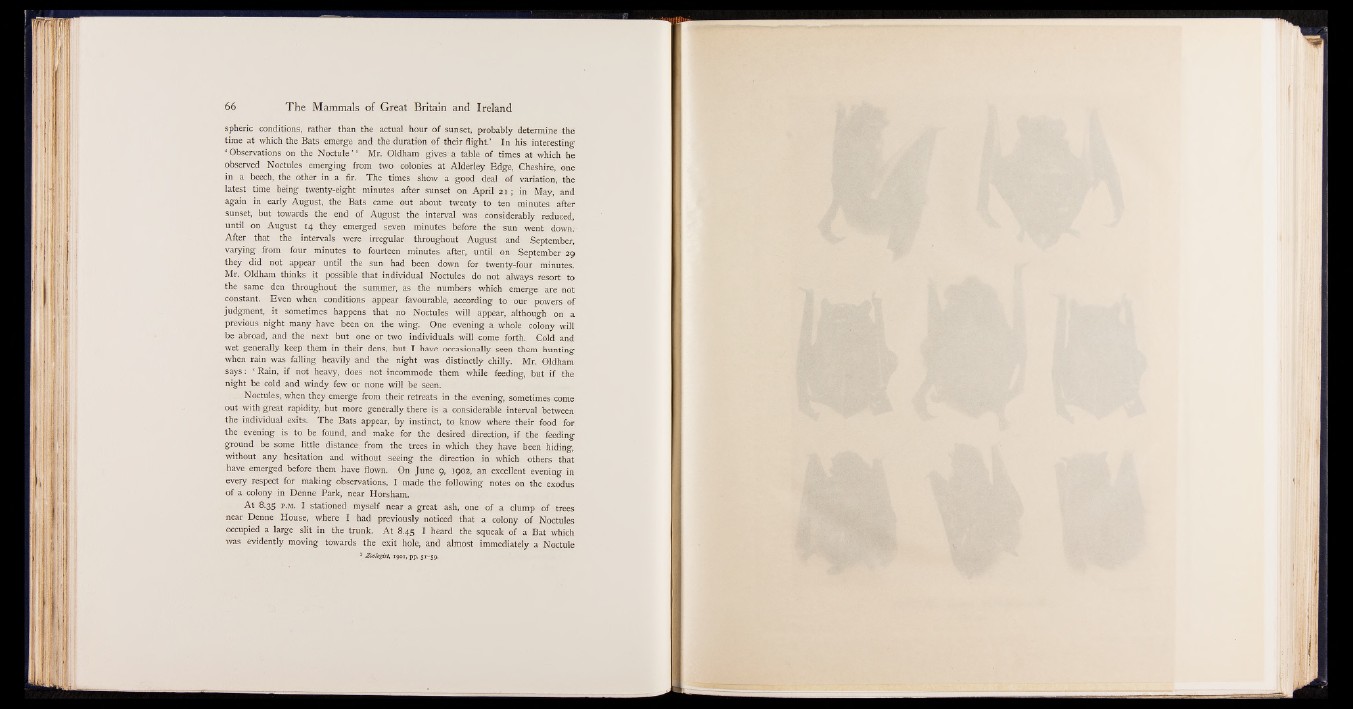
spheric conditions, rather than the actual hour of sunset, probably determine the
time at which the Bats emerge and the duration of their flight.’ In his interesting
‘ Observations on the Noctule’ 1 Mr. Oldham gives a table of times at which he
observed Noctules emerging from two colonies at Alderley Edge, Cheshire, one
in a beech, the other in a fir. The times show a good deal of variation, the
latest time being twenty-eight minutes after sunset on April 21 ; in May, and
again in early August, the Bats came out about twenty to ten minutes after
sunset, but towards the end of August the interval was considerably reduced,
until on August 14 they emerged seven minutes before the sun went down.
After that the intervals were irregular throughout August and September,
varying from four minutes to fourteen minutes after, until on September 29
they did not appear until the sun had been down for twenty-four minutes.
Mr. Oldham thinks it possible that individual Noctules do not always resort to
the same den throughout the summer, as the numbers which emerge are not
constant. Even when conditions appear favourable, according to our powers of
judgment, it sometimes happens that no Noctules will appear, although on a
previous night many have been on the wing. One evening a whole colony will
be abroad, and the next but one or two individuals will come forth. Cold and
wet generally keep them in their dens, but I have occasionally seen them hunting
when rain was falling heavily and the night was distinctly chilly. Mr. Oldham
says: ‘ Rain, if not heavy, does not incommode them while feeding, but if the
night be cold and windy few or none will be seen.
Noctules, when they emerge from their retreats in the evening, sometimes come
out with great rapidity, but more generally there is a considerable interval between
the individual exits. The Bats appear, by instinct, to know where their food for
the evening is to be found, and make for the desired direction, if the feeding
ground be some little distance, from the trees in which they have been' hiding,
without any hesitation and without seeing the direction in which others that
have emerged before them have flown. On June 9, 1902, an excellent evening in
every respect for making observations, I made the following notes on the exodus
of a colony in Denne Park, near Horsham.
At 8.35 p .m . I stationed myself near a great ash, one of a clump of trees
near Denne House, where I had previously noticed that a colony of Noctules
occupied a large slit in the trunk. At 8.45 I heard the squeak of a Bat which
was evidently moving towards the exit hole, and almost immediately a Noctule
1 Zoologist, 1901, pp. 51-59.